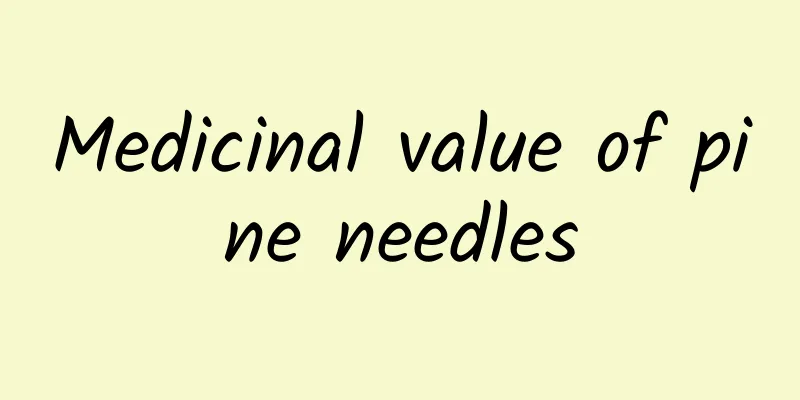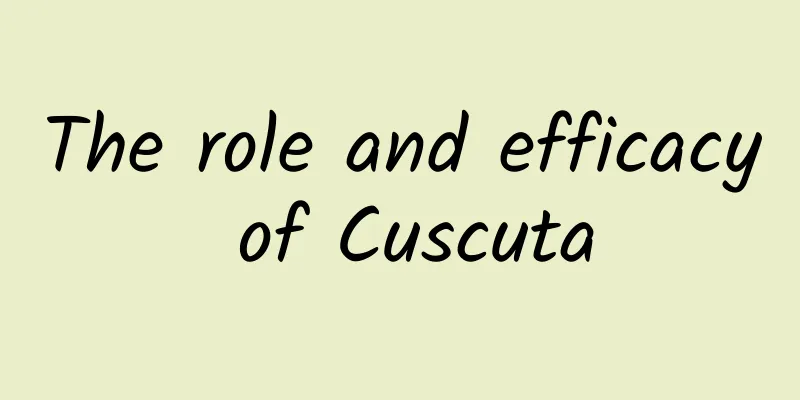The best way to lower blood lipids with Chinese medicine

|
As living standards continue to improve, many diseases of affluence have begun to appear, including hypertension, coronary heart disease, fatty liver and diabetes, and the most obvious obesity and hyperlipidemia. If patients with hyperlipidemia are not treated for a long time, many unnecessary complications will occur. In normal times, you can use some Chinese patent medicines to slowly regulate your body. They are all edible and there is no need to worry about any harm. Although there are many Western medicines for lowering blood lipids, most of them have certain side effects. Traditional Chinese medicine also has unique advantages in controlling blood lipids. Recommended Chinese medicines commonly used in clinical practice that have the effect of lowering blood lipids: Hawthorn: Hawthorn contains substances such as hawthorn acid and tartaric acid, which can dilate blood vessels, lower blood pressure, lower cholesterol, and increase gastric digestive enzymes. Patients can usually use 50 grams of fresh hawthorn fruit or 6 grams of dried hawthorn, boiled in water and then drink as tea. It should be noted that patients with excessive gastric acid should not take more. Ginkgo leaves: Ginkgo leaves contain shikimic acid, ginkgoflavone, isoginkgoflavone, sterols and other ingredients. Experimental studies and clinical trials have shown that Ginkgo biloba leaves can lower serum cholesterol and dilate coronary arteries, and have a certain effect on the treatment of hypertension, hyperlipidemia and coronary heart disease. It can be used alone or in combination with drugs such as Chuanxiong and Safflower. Puhuang: Puhuang is sweet in taste and neutral in nature. It contains plant sterols such as sitosterol, stigmasterol, and campesterol, which can inhibit the intestinal absorption of exogenous cholesterol, thereby playing a role in lowering blood lipids. But only raw Puhuang has this effect, while Puhuang oil and residue have no such medicinal effect. Clinically, taking 30 grams of raw Puhuang daily for 1 to 2 months as a course of treatment has a certain effect on lowering cholesterol. Raw Polygonum multiflorum: Raw Polygonum multiflorum has a bitter taste and is cold in nature. It contains anthraquinones such as rhein, rhein, chrysophanol, aloe-emodin, etc., which can promote intestinal peristalsis, reduce cholesterol absorption, and accelerate cholesterol excretion, thereby lowering blood lipids and resisting atherosclerosis. Polygonum multiflorum has the effects of nourishing the liver and kidneys, improving the essence and blood, and promoting bowel movements. It is especially suitable for elderly patients with hyperlipidemia, liver and kidney yin deficiency, and constipation. Alisma: Alisma contains terpenoid compounds, which can affect fat decomposition and reduce the raw materials for synthesizing cholesterol, thereby playing a role in lowering blood lipids, preventing and treating atherosclerosis and fatty liver. Cassiae: Cassiae is also called Cassia seed. It tastes sweet and bitter, is slightly cold in nature, contains plant sterols and anthraquinones, can inhibit the increase of serum cholesterol and the formation of atherosclerotic plaques, and has a significant effect in lowering blood lipids. It is reported that taking 50 grams of Cassia tora, adding appropriate amount of water, decocting it and taking it in two doses for one month can gradually reduce cholesterol to normal levels. Lotus leaf: Lotus leaf contains nuciferol, demethylnuciferol, annonaine, annona glycoside, tartaric acid, oxalic acid, gluconic acid, succinic acid, tannic acid, etc., which have a good effect in lowering blood lipids. In clinical practice, lotus leaves can be drunk as tea or added to dishes during cooking. |
<<: Does dandelion lower blood lipids?
>>: Is it harmful to take Chinese medicine for a month?
Recommend
Pearl Herba
The efficacy of pearl bone grass Pearl bone grass...
What are the benefits of eating milk and eggs together? After reading the fourth point, I silently picked up the milk and eggs.
Milk and eggs are both animal foods, and the effe...
This may be the most rigorous "full body checkup" in the world...
In the space launch mission, there is an extremel...
Can Astragalus be taken for a long time?
Astragalus is a traditional Chinese medicine with...
Where is the beauty of Hoh Xil?
Hoh Xil Located in the western part of Yushu Tibe...
The graceful water scenery in the desert, how beautiful are the lakes in Xinjiang?
Your browser does not support the video tag Lakes...
Can Alzheimer's disease be predicted? New evidence and suggestions on the causes of Alzheimer's disease
New evidence and suggestions on the causes of Alz...
What are the symptoms of epilepsy?
Vitiligo is a relatively common skin disease, whi...
The more I apply a mask, the drier my skin becomes? What’s the problem?
Peeling, flaking, and enlarged pores? If your ski...
The efficacy and function of buffalo horn concentrated powder
In today's society, health preservation seems...
From Beijing to New York, only 1 hour?
Expert of this article: Lin Wenjie, engineer, sen...
If humans became as small as insects, could they still rule the earth?
It took humans only 3 million years to achieve th...
Decades ago, doctors performed surgery on babies without anesthesia? They thought babies couldn't feel pain
We all know that babies cry to express physical f...
How come “big fat meat” and “little maggots” grow in vinegar?
Vinegar, as a common condiment, is often used in ...
What are the effects and functions of wild Astragalus?
Astragalus is a common Chinese medicinal material...









